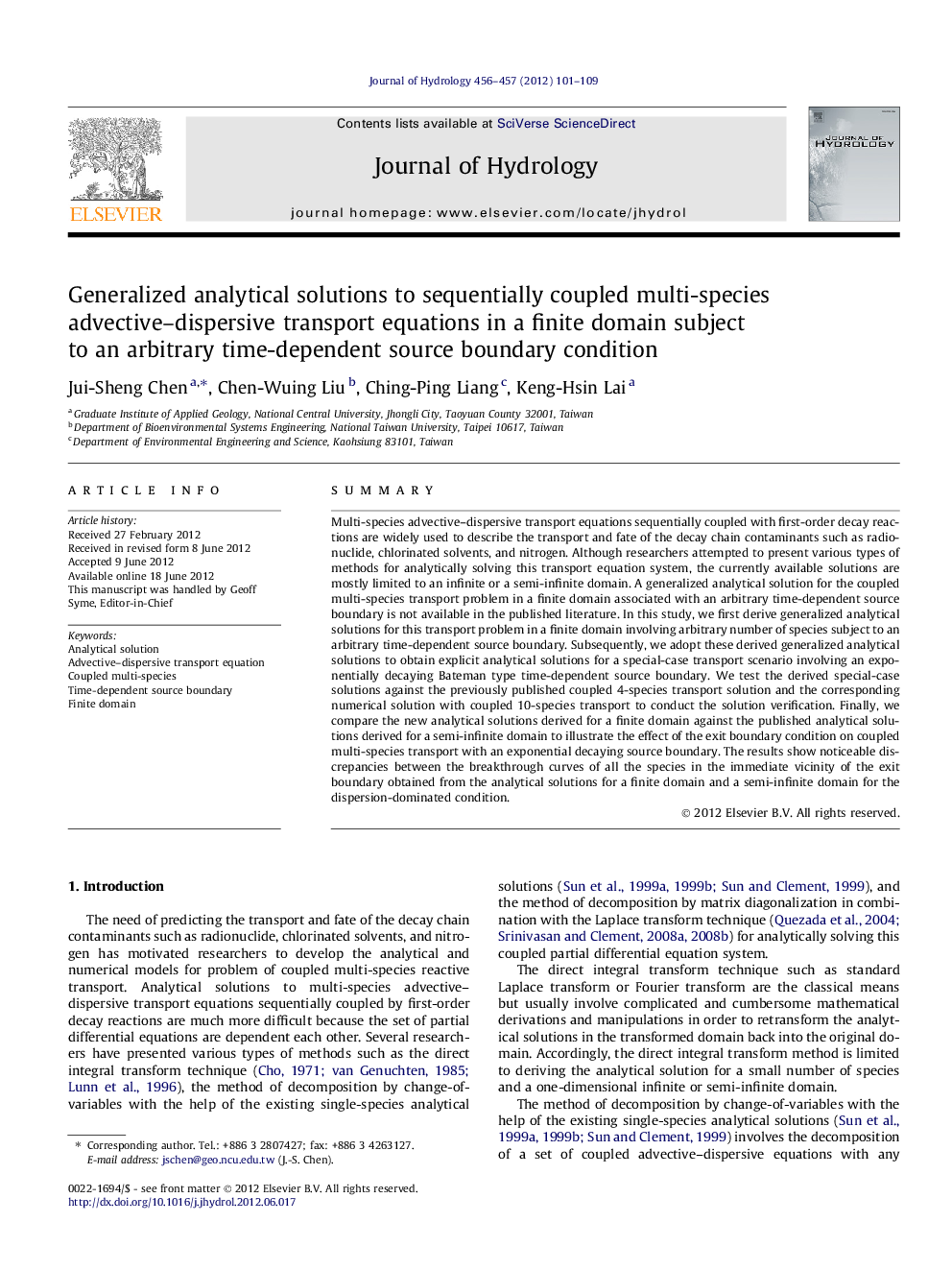| Article ID | Journal | Published Year | Pages | File Type |
|---|---|---|---|---|
| 4576873 | Journal of Hydrology | 2012 | 9 Pages |
SummaryMulti-species advective–dispersive transport equations sequentially coupled with first-order decay reactions are widely used to describe the transport and fate of the decay chain contaminants such as radionuclide, chlorinated solvents, and nitrogen. Although researchers attempted to present various types of methods for analytically solving this transport equation system, the currently available solutions are mostly limited to an infinite or a semi-infinite domain. A generalized analytical solution for the coupled multi-species transport problem in a finite domain associated with an arbitrary time-dependent source boundary is not available in the published literature. In this study, we first derive generalized analytical solutions for this transport problem in a finite domain involving arbitrary number of species subject to an arbitrary time-dependent source boundary. Subsequently, we adopt these derived generalized analytical solutions to obtain explicit analytical solutions for a special-case transport scenario involving an exponentially decaying Bateman type time-dependent source boundary. We test the derived special-case solutions against the previously published coupled 4-species transport solution and the corresponding numerical solution with coupled 10-species transport to conduct the solution verification. Finally, we compare the new analytical solutions derived for a finite domain against the published analytical solutions derived for a semi-infinite domain to illustrate the effect of the exit boundary condition on coupled multi-species transport with an exponential decaying source boundary. The results show noticeable discrepancies between the breakthrough curves of all the species in the immediate vicinity of the exit boundary obtained from the analytical solutions for a finite domain and a semi-infinite domain for the dispersion-dominated condition.
► Generalized analytical solution with any number of species is presented. ► Special-case solution for Bateman boundary condition is obtained. ► Exit boundary effect is investigated.
